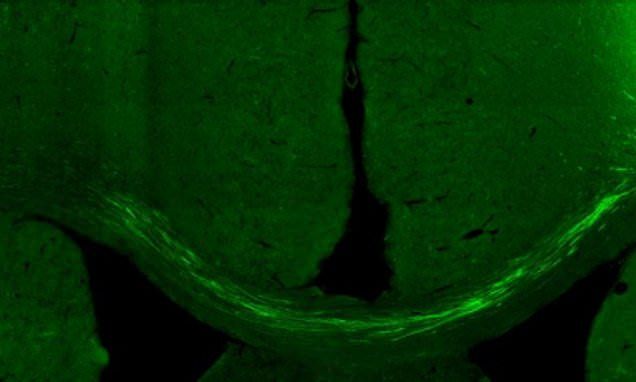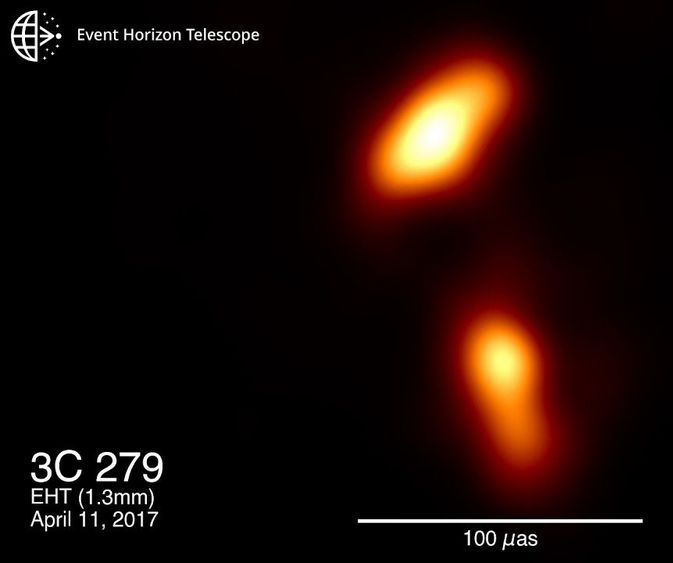Apr 10, 2020
Making simulated cosmic dust — in the microwave!
Posted by Saúl Morales Rodriguéz in category: space
Researchers find a simple way to make analogue dust samples could shed light on early solar system history.
Researchers find a simple way to make analogue dust samples could shed light on early solar system history.
I rarely use the words transformative or breakthrough for neuroscience findings. The brain is complex, noisy, chaotic, and often unpredictable. One intriguing result under one condition may soon fail for a majority of others. What’s more, paradigm-shifting research trends often require revolutionary tools. When we’re lucky, those come once a decade.
But I can unabashedly say that the 2010s saw a boom in neuroscience breakthroughs that transformed the field and will resonate long into the upcoming decade.
In 2010, the idea that we’d be able to read minds, help paralyzed people walk again, incept memories, or have multi-layered brain atlases was near incomprehensible. Few predicted that deep learning, an AI model loosely inspired by neural processing in the brain, would gain prominence and feed back into decoding the brain. Around 2011, I asked a now-prominent AI researcher if we could automatically detect dying neurons in a microscope image using deep neural nets; we couldn’t get it to work. Today, AI is readily helping read, write, and map the brain.
Graphene hematene batteries eternal sea power.
What’s better than an underwater drone? An underwater drone that can remain at sea forever, or at least for long periods.
By Michael Peck

The ESA probe BepiColombo flew past Earth on the way to Mercury. The probe launched in 2018 and made the last visit of our home before continuing onward to the final destination. The spacecraft needs to shed velocity to arrive at Mercury in 2025 at a velocity to enter orbit. The spacecraft will make multiple additional planetary flybys of Venus and Mercury to slow down to enter orbit.
In space travel, mission planners need to balance mission resources. The amount of fuel required to either speed up or slow down a spacecraft greatly impacts the cost of the mission. Using a longer flight path can reduce the propellent requirements for a mission but the mission will take longer. Gravity assists can, therefore, allow a spacecraft to be launched on a cheaper, less powerful rocket.
Gravity assist flyby?
A Gravity assist flyby has other names including a gravitational slingshot, gravity assist maneuver, or swing-by. Gravity assistance maneuvers increase or decrease its speed or redirect the orbital path. The spacecraft slingshots around another object with a gravitational field and transfers some of the energy during that slingshot. In the case of BepiColombo, the spacecraft needs to slow down to be captured by Mercury…
Tags: ESA, Gravity Assist, JAXA, NASA, Planet Mercury
Working around the clock for two weeks, a large team of Stanford Medicine scientists has developed a test to detect antibodies against the novel coronavirus, SARS-CoV-2, in blood samples.
In contrast to current diagnostic tests for COVID-19, which detect genetic material from the virus in respiratory secretions, this test looks for antibodies to the virus in plasma, the liquid in blood, to provide information about a person’s immune response to an infection.
The test was launched April 6 at Stanford Health Care. It differs from an externally developed test that Stanford researchers used for a prevalence study during recent community screening events.
Error free qubits o.,o.
Physicists at MIT and elsewhere have observed evidence of Majorana fermions—particles that are theorized to also be their own antiparticle—on the surface of a common metal: gold. This is the first sighting of Majorana fermions on a platform that can potentially be scaled up. The results, published in the Proceedings of the National Academy of Sciences, are a major step toward isolating the particles as stable, error-proof qubits for quantum computing.
In particle physics, fermions are a class of elementary particles that includes electrons, protons, neutrons, and quarks, all of which make up the building blocks of matter. For the most part, these particles are considered Dirac fermions, after the English physicist Paul Dirac, who first predicted that all fermionic fundamental particles should have a counterpart, somewhere in the universe, in the form of an antiparticle—essentially, an identical twin of opposite charge.
Continue reading “First sighting of mysterious Majorana fermion on a common metal” »

New hope for stroke patients as scientists find way to restore mobility and touch using human stem cells to recreate nerve connections in damaged rat brain…
Scientists have found a way to restore mobility and touch in rats after a stroke using human stem cells to recreate nerve connections in damaged brains — offering patients a new hope.
Continue reading “Scientists restore mobility and touch in stroke-afflicted rats” »
Severe acute respiratory syndrome coronavirus 2 (SARS-CoV-2) causes the infectious disease COVID-19, which was first reported in Wuhan, China in December, 2019. Despite the tremendous efforts to control the disease, COVID-19 has now spread to over 100 countries and caused a global pandemic. SARS-CoV-2 is thought to have originated in bats; however, the intermediate animal sources of the virus are completely unknown. Here, we investigated the susceptibility of ferrets and animals in close contact with humans to SARS-CoV-2. We found that SARS-CoV-2 replicates poorly in dogs, pigs, chickens, and ducks, but ferrets and cats are permissive to infection. We found experimentally that cats are susceptible to airborne infection. Our study provides important insights into the animal models for SARS-CoV-2 and animal management for COVID-19 control.
In late December 2019, an unusual pneumonia emerged in humans in Wuhan, China, and rapidly spread internationally, raising global public health concerns. The causative pathogen was identified as a novel coronavirus (1–16) that was named Severe Acute Respiratory Syndrome Coronavirus 2 (SARS-CoV-2) on the basis of a phylogenetic analysis of related coronaviruses by the Coronavirus Study Group of the International Committee on Virus Taxonomy (17); the disease it causes was subsequently designated COVID-19 by the World Health Organization (WHO). Despite tremendous efforts to control the COVID-19 outbreak, the disease is still spreading. As of March 11, 2020, SARS-CoV-2 infections have been reported in more than 100 countries, and 118,326 human cases have been confirmed, with 4,292 fatalities (18). COVID-19 has now been announced as a pandemic by WHO.
Although SARS-CoV-96.2% identity at the nucleotide level with the coronavirus RaTG13, which was detected in horseshoe bats (Rhinolophus spp) in Yunnan province in 2013 (3), it has not previously been detected in humans or other animals. The emerging situation raises many urgent questions. Could the widely disseminated viruses transmit to other animal species, which then become reservoirs of infection? The SARS-CoV-2 infection has a wide clinical spectrum in humans, from mild infection to death, but how does the virus behave in other animals? As efforts are made for vaccine and antiviral drug development, which animal(s) can be used most precisely to model the efficacy of such control measures in humans? To address these questions, we evaluated the susceptibility of different model laboratory animals, as well as companion and domestic animals to SARS-CoV-2.
With data from NASA’s LRO mission, researchers have recreated what the Apollo 13 astronauts saw on their trip around the moon.

Last year, a global collaboration of scientists made history by unveiling the very first direct image of a black hole. Now, we have a magnificent follow-up — the closest-ever look at a violent jet spewed forth by a supermassive black hole.
